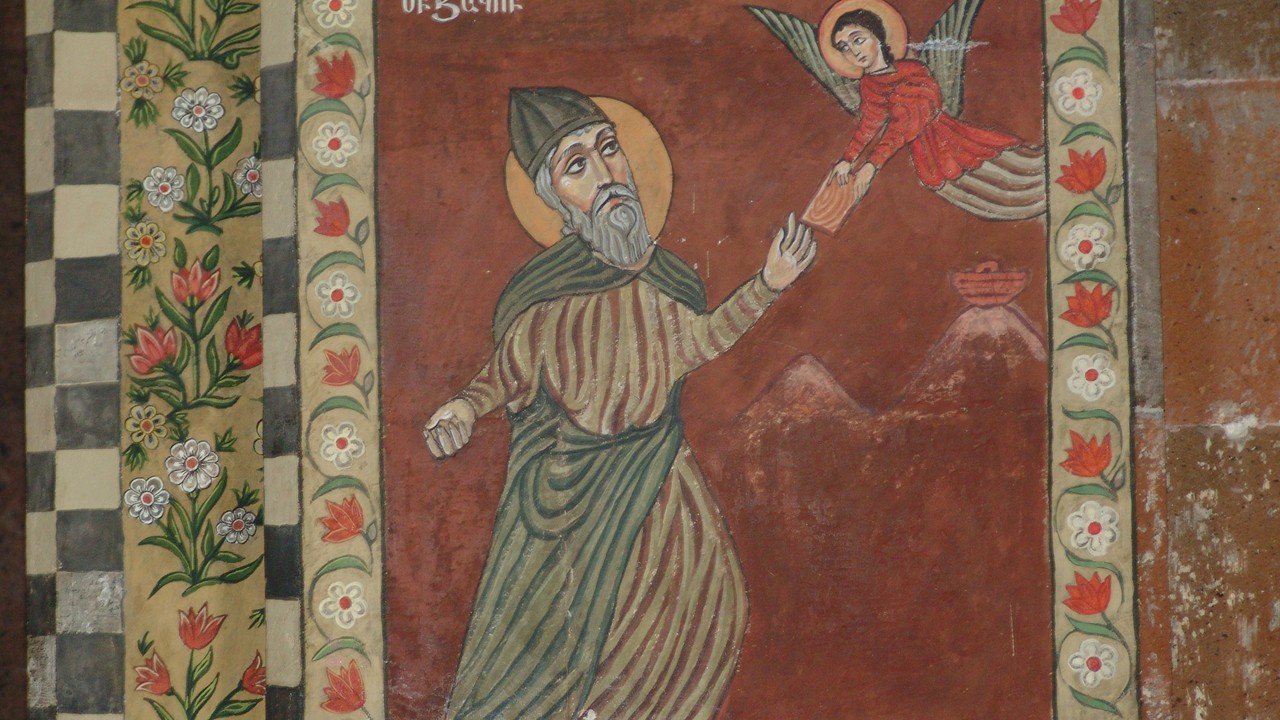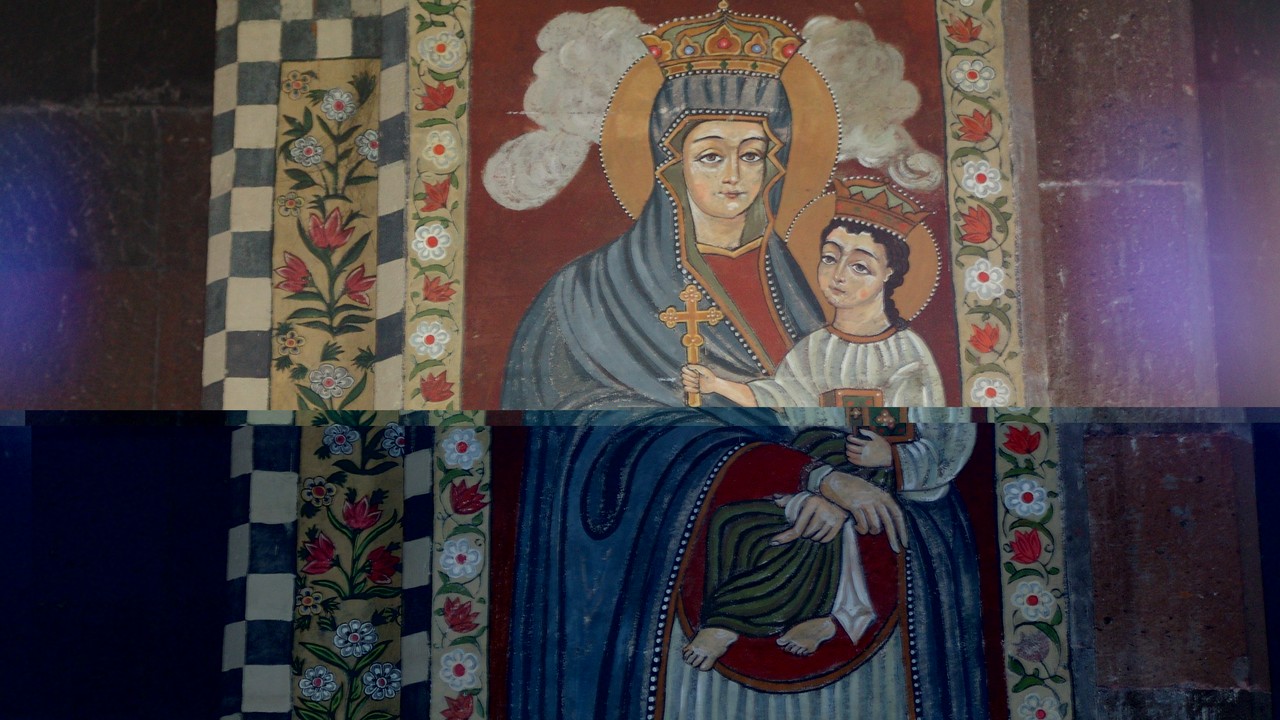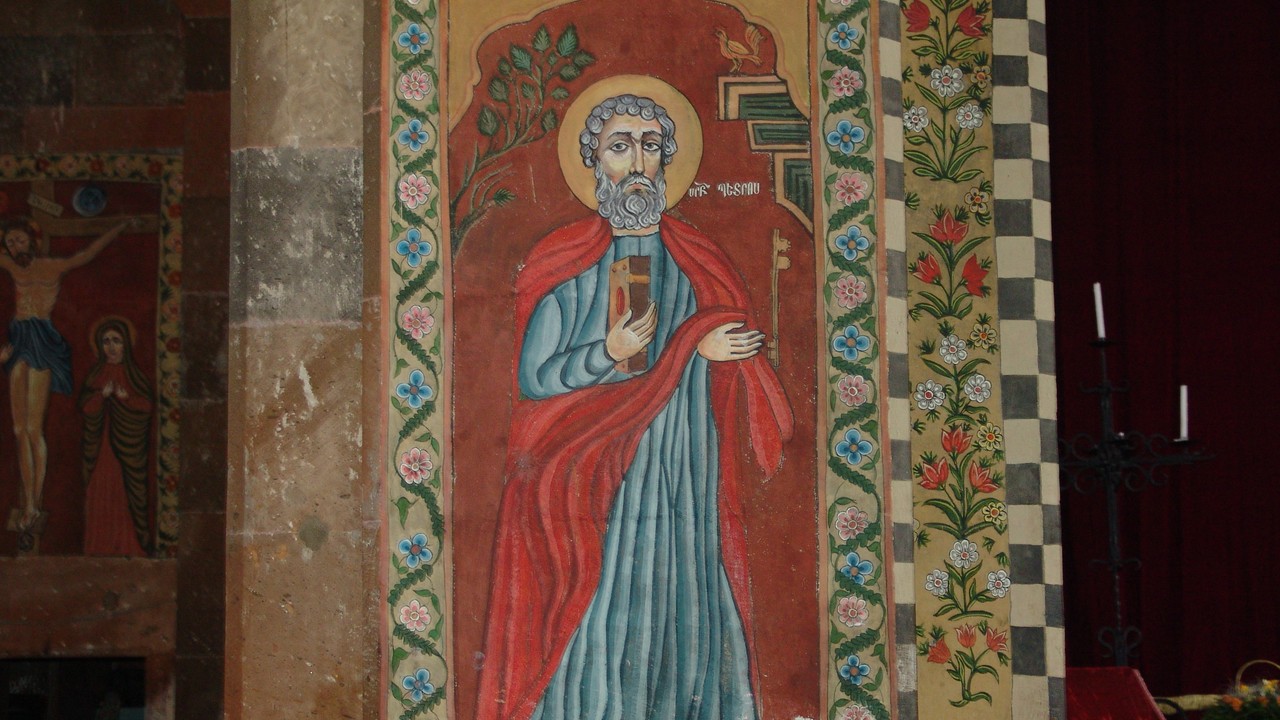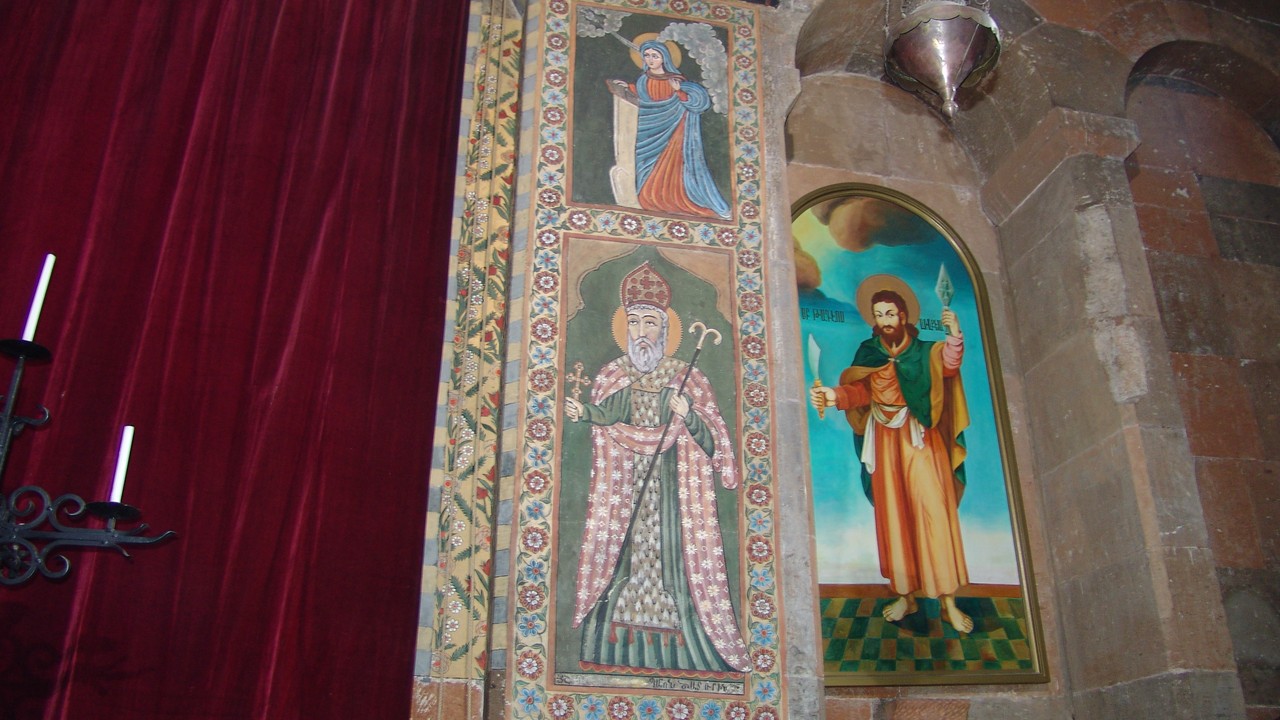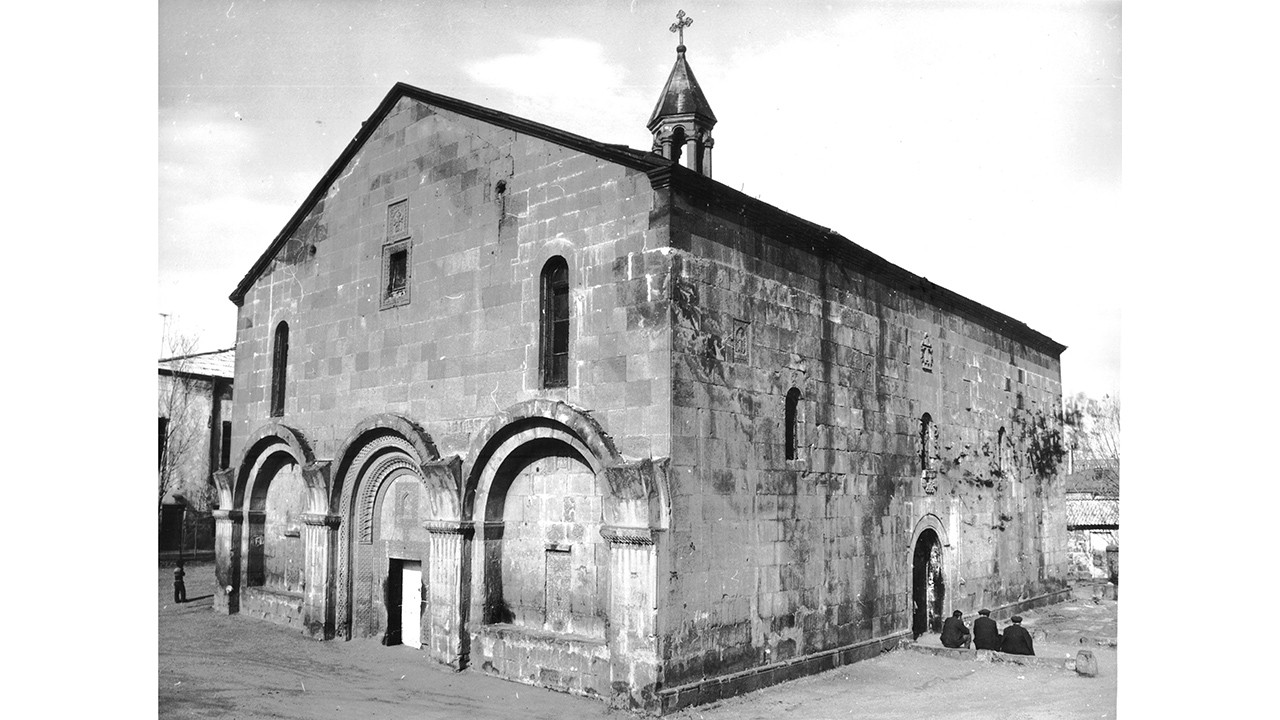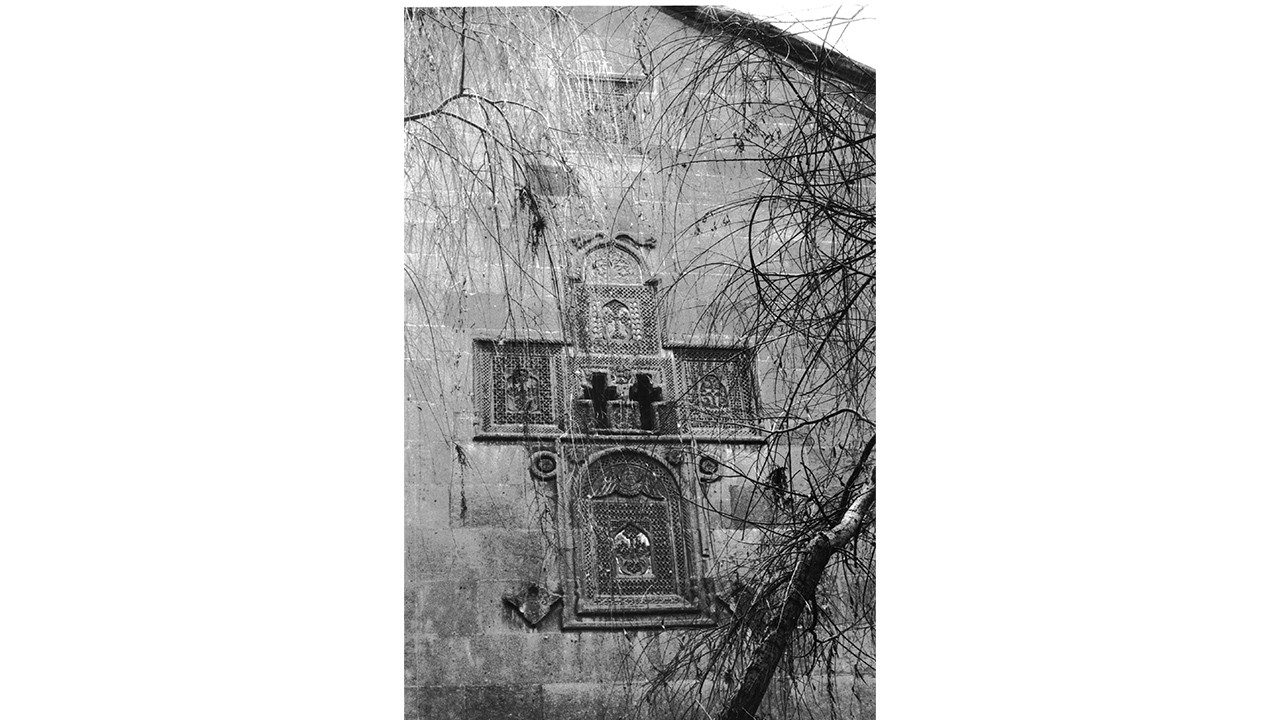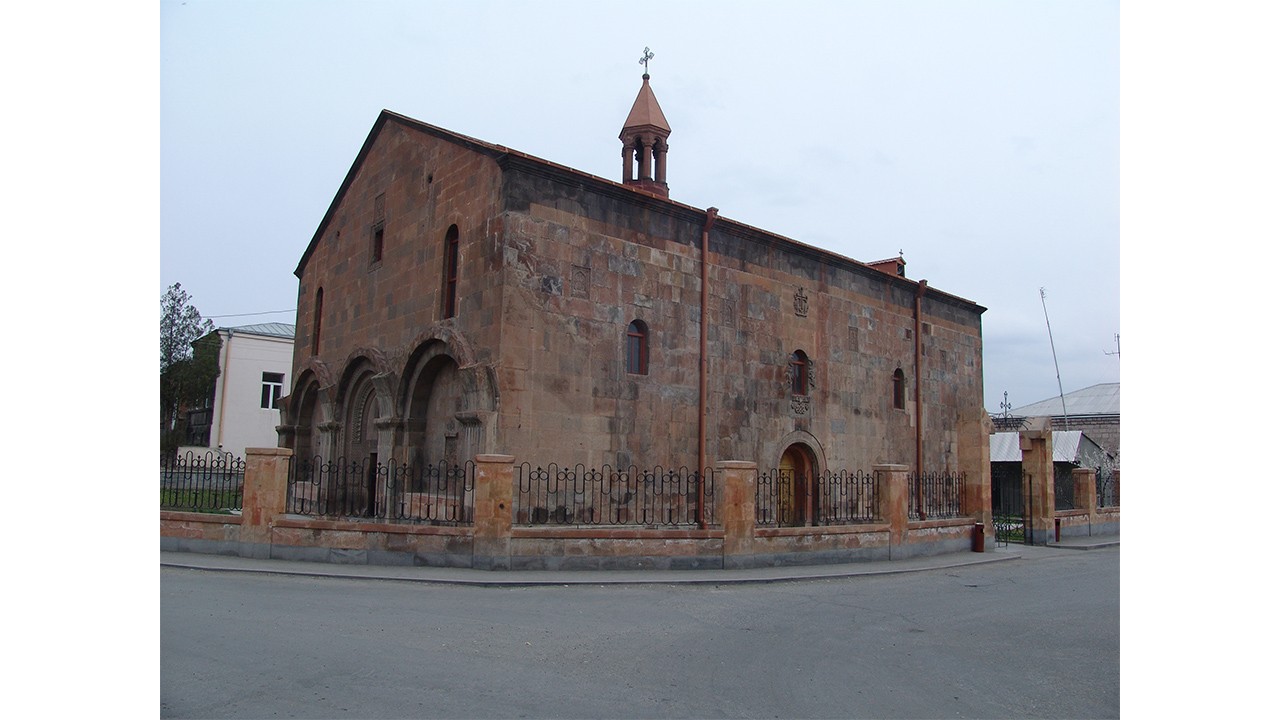PLACES OF WORSHIP
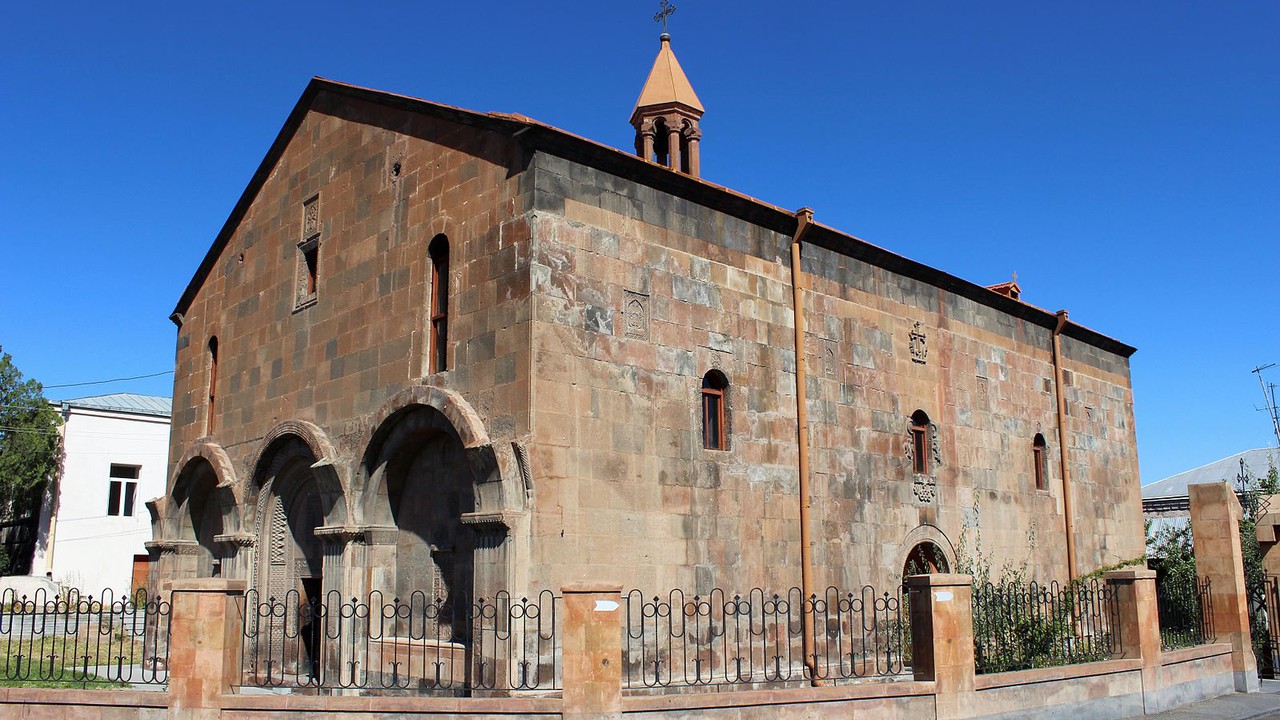
KANAKER SOURB HAKOB (ST. JAMES) CHURCH
1695
State index: 1.12.6
It is located on Kanaker 6th Street. It is dedicated to Mtsbin’s St. Hakob (James) Patriarch. It is considered to be constructed after a destructive earthquake of the Ararat Valley in 1679 on the site of the destroyed church. It was partially renovated in 1798. It was the parish church of Kanaker village. It is still operating.
The church has an arcaded triple-nave basilica composition with pair of gables and pair of sacristies. The gables are cross like in cut, while the arches and arcaded columns are arrow-shaped. There is a rotunda consisted of six pillars rising on a gable style roof. There are 4 wall gables annexed to the western facade, with wall columns stretching between them, which were planned to build a triple-pillared open hall, but construction remained unfinished. External sizes are 16.2 x 23.8 m, inner dimensions: 13.7 x 17.2 m, average ship height is 10.5 m.
The western entrance of the church was built alike Kanaker’s St. Astvatsatsin Church. The entrance was positioned in the central niche of the three-arched facade, while khachkars were installed in the flanking walls. A second entrance to the church is located on the south side. Lighting is provided by windows on all the walls. The altar window features an elaborate cross-like decoration. The interior space is adorned with thematic frescoes from the New Testament, including one from the 18th century, dated 1739. Khachkars by Sahak (1621), Ter David, Herapet (XVI), and others are embedded in the walls. Inscriptions with the names of the patrons who funded the church’s gables are also present. For example, the southeastern gable was built by Gulnazar, while the northeastern gable was funded by Avag and Grigor. A gate on the southwestern side of the church, constructed by the master Simeon Arnjetsi in 1868, has been preserved. The construction material used is black and red smooth Yerevanian tuff.
In the
cemetery surrounding the church, a khachkar commemorating Mina Khatun, created
by the medieval stone-cutter master Trdat in the 16th century, has been
preserved. Other inscribed tombstones include those from 1750 (Hovhannes, with
an Armenian-Georgian inscription), 1765, 1767 (Grigor Yuzbashi), 1789
(Harutyun), and 1833 (Natalia). The latter is a marble gravestone for the
one-year-old daughter of Barsegh Behbutyan (Vasil Behbutov), the first Armenian
governor (1830-1838) and Major General. In the early 2000s, the church
underwent renovation, and the area was improved and fenced.
“Scientific Research Centre of Historical and Cultural Heritage” SNCO
Yerevan Municipality
